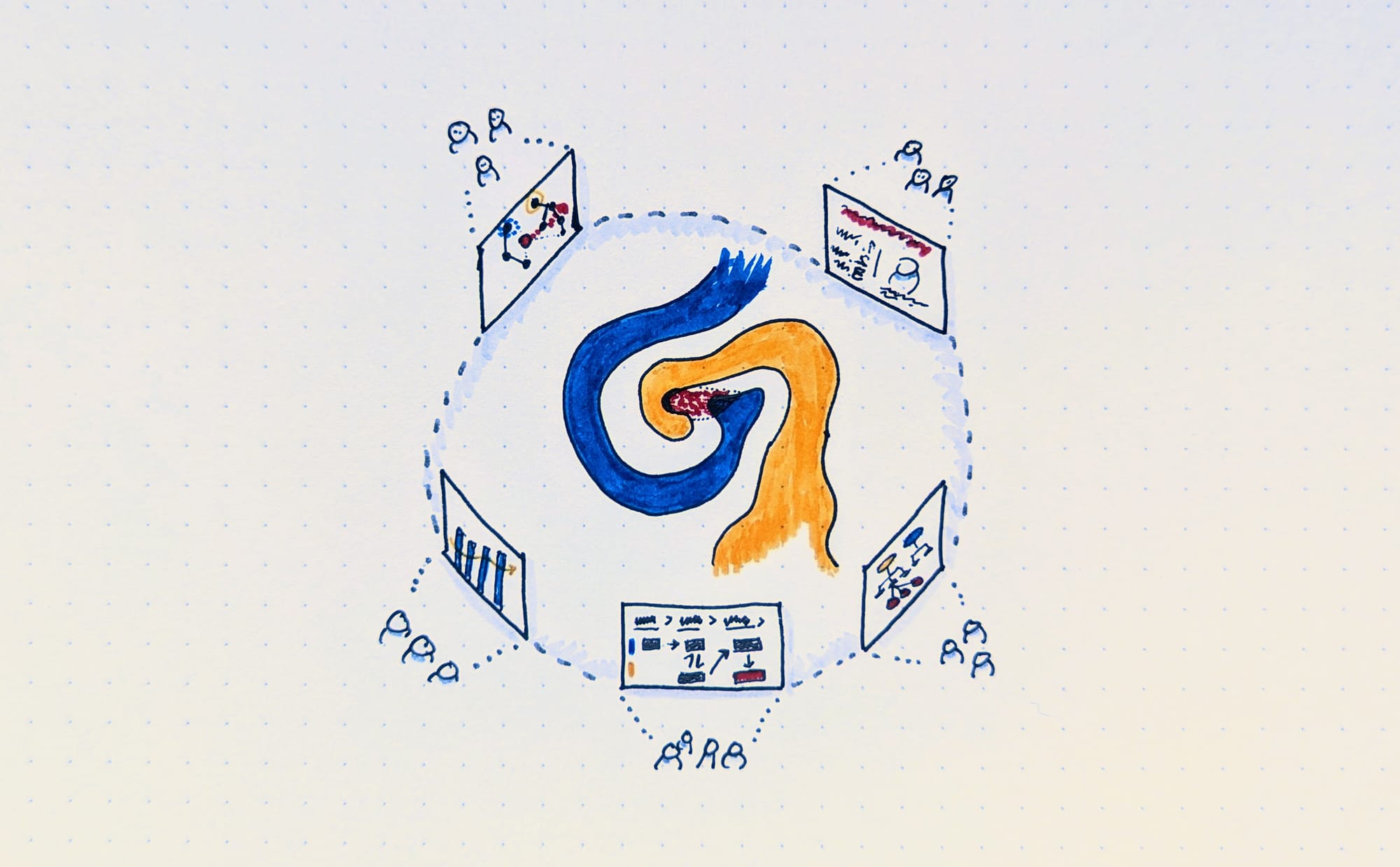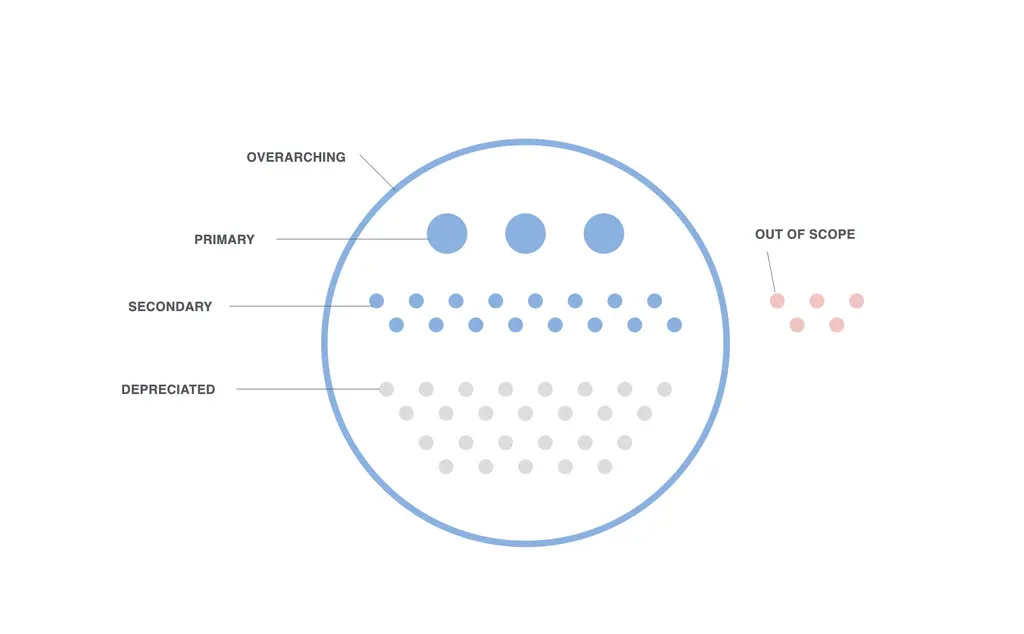When groups of people are trying to build a nebulous, digital system like a software product, it's surprisingly difficult to understand, together, what is being considered and where the focus of the action lies.
Our methods and tools — models, frameworks, maps, diagrams — try to build this understanding: they push us to characterize the context we're working with by its relationships and patterns of activity.
This kind of critical inspection and intentional framing is the hidden key to strategy. We highlight salient features of the situation so they can be discussed and challenged. We expose the assumptions, questions, and intervention points we work with.

One view is never enough. Different views are more appropriate for understanding certain scenarios, or certain levels of scale. And even for one specific problem area — a new feature, a retention push, a messy infrastructural redesign — we need a few different windows into the problem to understand and work on what's important.
One great example of getting there, in the course of large, strategic research projects, is Studio D's Framework Drawinism.
Studio D's research process is an engine for developing frameworks through the life of a research project, slowly evolving and converging on the set of models that highlight the most interesting aspects of project space.

I like to imagine these activities are like an optometrist (the team) testing multiple lenses — which one is clearer, A or B? C or D? — over and over again, while reshaping and recalibrating toward clarity.
As research unbundles and we move toward more continuous and direct process of insight, it's easy for us to lose sight of the necessity of conceptual clarity. The synthesis activities to build frameworks are the precursors to frame control. They tend to live deeper in the design and research processes, and they're the first to fall through the cracks.
Having the right frames — and knowing how to use them — is increasingly important and increasingly difficult for our teams to do well.
Other things of note
- This update came out of a chat with Tom Kerwin. I said 80% of the value I deliver on projects isn't the research itself, it's more the framing that gets us somewhere constructive. Tom said, "It's all frame control."
- I like Nan Yu's Heirloom Tomato Org Chart talk at Config 2024. Linear's specific staffing structure may not be broadly applicable, but the principles it was derived from — don't blindly use the same structure everywhere, focus on the work, adapt staffing accordingly — are.
- Studio D just announced November dates for their masterclasses on Strategic Narratives and Framework Darwinism.
This is Loops and Cycles, a weekly mailing list exploring how we work together and make good things. Share it with your team, send it to a friend, or send me your thoughts and questions.


![Frame Control [LC11]](/content/images/size/w100/2024/07/PXL_20240706_110049347--1-.jpg)
